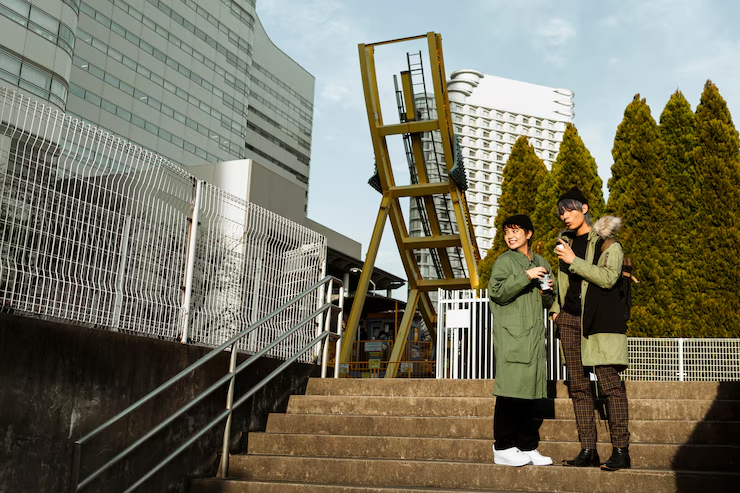In an era where urban life often feels overwhelming—marked by noise, clutter, and endless distractions—the concept of Simpcitt is emerging as a transformative solution. Combining simplicity, sustainability, and intentional living, Simpcitt reimagines city life by prioritizing what truly matters. This 1,500-word guide dives deep into the philosophy of Simpcitt, its core principles, and actionable steps to embrace this lifestyle. Whether you’re a city dweller seeking balance or an advocate for eco-friendly living, discover how Simpcitt can redefine your urban experience.
What Is Simpcitt? Redefining Urban Complexity
Simpcitt (a portmanteau of “simple” and “city”) is a movement advocating for minimalist, sustainable, and community-centric urban living. It challenges the traditional notion that cities must be chaotic, polluted, and stressful. Instead, Simpcitt envisions cities as hubs of efficiency, green spaces, and human connection.
The term originated from growing frustrations with urban sprawl, consumerism, and the mental health toll of fast-paced lifestyles. By integrating minimalism, eco-conscious practices, and smart technology, offers a blueprint for cities and residents to thrive without sacrificing well-being or the planet.
Core Principles of Simpcitt
To adopt Simpcitt, understanding its foundational pillars is key:
1. Minimalism in Design and Lifestyle
Simpcitt rejects excess. Architecturally, this means compact, multi-functional spaces with green building materials. For individuals, it’s about owning fewer possessions and focusing on experiences. Think:
- Tiny apartments with modular furniture.
- Walkable neighborhoods reducing reliance on cars.
- Digital decluttering to minimize screen time.
A 2022 UCLA study found that cluttered environments increase cortisol levels by 15%. Simpcitt tackles this by promoting “less is more” as a mental and physical health strategy.
2. Sustainability as a Non-Negotiable
Cities contribute to 70% of global CO2 emissions (World Bank, 2023). addresses this through:
- Renewable energy adoption (solar panels, wind turbines).
- Zero-waste policies (composting, circular economies).
- Urban farming (rooftop gardens, community plots).
Cities like Copenhagen and Singapore already showcase these principles, aiming for carbon neutrality by 2025 and 2050, respectively.
3. Community Over Isolation
Modern cities often breed loneliness. fosters connection via:
- Shared spaces (co-working hubs, public parks).
- Local markets prioritizing small businesses.
- Participatory governance where residents co-design policies.
A Harvard study revealed that socially connected individuals live longer, healthier lives—proof that community is a Simpcitt cornerstone.
4. Smart Technology for Efficiency
Simpcitt isn’t anti-tech; it’s about using innovation wisely. Examples include:
- AI-powered public transport optimizing routes.
- Energy-efficient smart grids.
- Apps for resource-sharing (tool libraries, carpooling).
Why Simpcitt Matters: 5 Transformative Benefits
- Enhanced Mental Well-being
Less clutter, cleaner air, and stronger social ties reduce stress and anxiety. - Environmental Preservation
Lower emissions and waste combat climate change. - Financial Freedom
Minimalist living cuts unnecessary spending—redirecting funds toward travel, education, or savings. - Resilient Communities
Tight-knit neighborhoods better withstand crises, from pandemics to natural disasters. - Future-Proof Cities
Sustainable infrastructure ensures cities remain livable for generations.
How to Embrace Simpcitt: A Step-by-Step Guide
For Individuals
- Declutter Ruthlessly: Donate unused items; opt for quality over quantity.
- Go Green: Bike instead of drive, switch to renewable energy providers.
- Engage Locally: Join community gardens or neighborhood councils.
For City Planners
- Prioritize Pedestrians: Expand sidewalks, create car-free zones.
- Invest in Green Spaces: Parks improve air quality and mental health.
- Adopt Circular Economies: Recycle materials, incentivize zero-waste businesses.
Challenges and Solutions in Adopting Simpcitt
Challenge 1: Resistance to Change
- Solution: Pilot projects showcasing Simpcitt’s benefits (e.g., pop-up parks, free bike-sharing trials).
Challenge 2: High Initial Costs
- Solution: Government subsidies for solar panels or green retrofits.
Challenge 3: Cultural Shifts
- Solution: Education campaigns on minimalism and sustainability in schools.
The Future of Simpcitt: A Global Movement
From Amsterdam’s car-free市中心 to Tokyo’s micro-apartments, Simpcitt principles are gaining traction. Tech advancements like vertical farming and carbon capture will further propel this movement.
Conclusion: Simpcitt Is More Than a Trend—It’s a Necessity
Urbanization isn’t slowing down, but Simpcit proves cities don’t have to sacrifice livability for growth. By embracing simplicity, sustainability, and community, we can create urban spaces that nurture both people and the planet.










